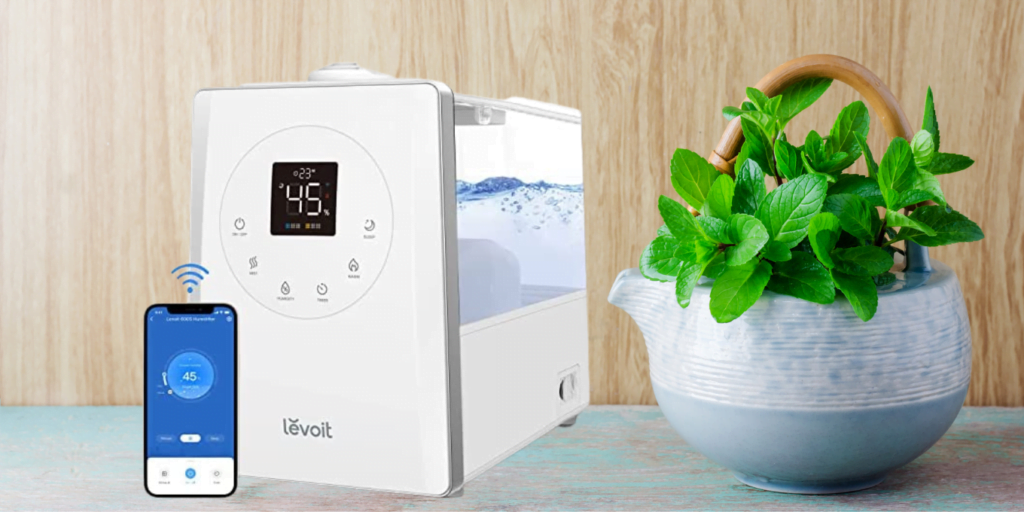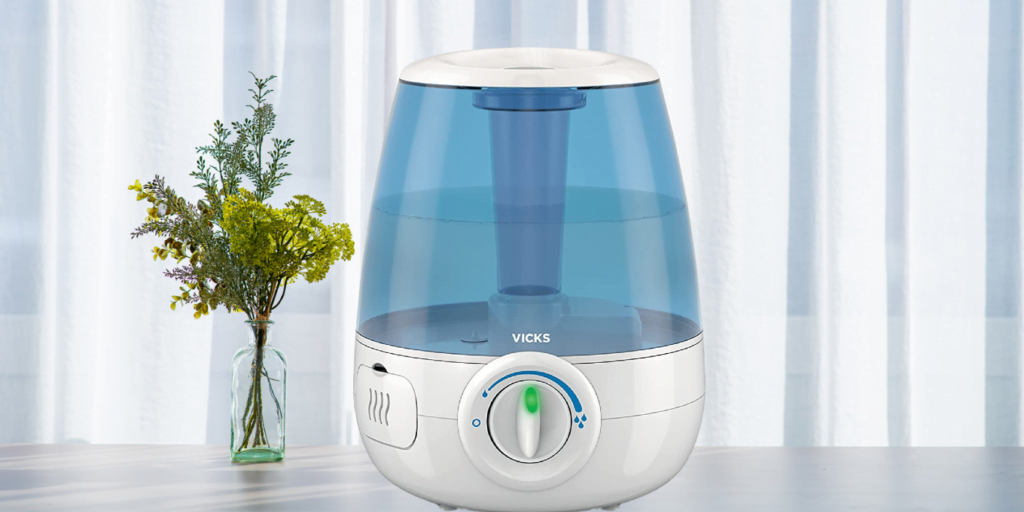A humidifier is a device that increases humidity levels in a single room or an entire home. Humidifiers have numerous benefits that make them a valuable addition to any home, especially during dry winters when low moisture levels can negatively impact health and comfort. This article will explore the reasons for using a humidifier and explain how different types work.
Improves Breathing and Sleep
One of the top reasons people use humidifiers is to relieve respiratory irritation when the air is too dry. Winter heating systems and dry climates remove moisture from the air, irritating nasal passages and making breathing more difficult. Using a humidifier adds moisture back into the air, relieving symptoms caused by arid air.
Humidifiers benefit those suffering from respiratory illnesses like colds, flu, sinus infections, allergies, and asthma. Extra moisture in the air can help loosen congestion, reduce inflammation, and improve sleep. Doctors commonly recommend humidifiers to help relieve coughs, sore throats, and congestion. Parents of young children may also want to use a humidifier in their child’s room when they have a cold to aid breathing and sleep.
In addition to illness relief, humidifiers can improve sleep for those living in a naturally dry climate or use heating systems in the winter. The moisture put out by the humidifier helps keep nasal passages lubricated and makes breathing easier. This can prevent you from waking up due to dried-out courses. The mist emitted also mimics the moisture in the air that occurs naturally when it rains, which some people find soothing. A humidifier in the bedroom can promote more profound, restful sleep.
Relieves Dry Skin and Hair
Dry air doesn’t just impact our breathing and sleep- it also takes a toll on our largest organ, our skin. Skin needs sufficient moisture to stay supple, soft, and wrinkle-free. When moisture levels drop in the winter, it can lead to dry, itchy, flaking skin and even cracked hands and feet. The hydration benefits of humidifiers can relieve these aggravating winter skin conditions.
In addition to skin, dry air also affects our hair. Low moisture levels sap the hair of its natural oils and increase static and flyaways. The hydrating mist emitted by humidifiers replaces some lost moisture, reducing static and frizz. Those with naturally curly hair may especially want to use a humidifier to help maintain their curls’ bounce and definition during dry winter months. The hydration provided can make hair smoother, softer, and more manageable.

Protects Furniture and Houseplants
Not only do low humidity levels impact living things, but they also take a toll on inanimate objects. Wooden furniture is particularly vulnerable to drying out when moisture levels drop. This can lead to cracks, loose joints, and antique and heirloom furniture damage. A humidifier helps maintain sufficient moisture to keep wood supple and avoid injury. Musicians may also use humidifiers to maintain moisture levels for wood instruments like guitars, violins, and pianos during the winter.
Indoor houseplants also benefit from supplemental humidity provided by humidifiers. Tropical plants and flowers thrive in high-humidity environments. Heating systems and dry air can quickly sap moisture from houseplant soil during the winter. Using a humidifier in the room helps replace some of this lost moisture through the air and prevents shock to delicate tropical plants.
Throat and Voice Relief
Dry air can also cause irritation and discomfort to the throat and vocal cords. This is especially problematic for singers, public speakers, teachers, customer service representatives, and others who rely on their voices for their careers. A dry throat can make speaking, singing, and swallowing painful. It can also reduce vocal range and quality.
Humidifiers can provide relief by adding moisture back into the air, hydrating and lubricating the throat and vocal cords. This helps reduce irritation and vocal strain. Adding a humidifier to your home studio, office, or other workspace can help save your voice during long speaking or singing sessions in dry climates or winter months. The visibility of the humidifier’s mist can also serve as a helpful visual reminder to drink water to stay vocally hydrated.
Protects Wood Flooring
In addition to furniture, humidifiers also help protect wood flooring from damage caused by dry air. Hardwood floors are prone to shrinking, cracking, and warping when the air becomes excessively dry. The humidifier mist hydrates and preserves wood, preventing deterioration and expensive repairs. Homeowners with expensive hardwood flooring should consider using a humidifier to protect their investment, especially in rooms where humidity levels drop, like living rooms with fireplaces or bedrooms with electric heat.
Reduces Static Electricity
Static electricity from dry air can deliver unpleasant and even painful shocks, especially in the winter. It can also damage electronics, making basic tasks like peeling tape frustrating. Humidifiers raise moisture levels in the air, which reduces static buildup that leads to those little electric zaps we all dislike. Keeping a humidifier in your home office or workstation can help prevent damage to electronics from static discharges. Adding moisture to your home’s air makes day-to-day tasks less annoying by eliminating little shocks.
Eases Cold Symptoms
As previously mentioned, humidifiers can provide relief when you have a cold or the flu. The moisture loosens congestion to aid breathing, and the visible mist creates air moisture that may feel soothing. The hydration benefits can also offset some dehydration effects caused by sweating from fever, coughing, or trouble swallowing.
Some humidifiers also have the option to add breathing-friendly ingredients to the water tank, like menthol, eucalyptus oil, or vapor rubs. When the humidifier emits its mist, it disperses these ingredients into the air. Breathing in the medicated mist relieves sore throats, stuffy noses, and coughs. This makes humidifiers a helpful tool for finding comfort when feeling under the weather.
The Benefits of Using a Humidifier
Low Maintenance Health Benefits
Humidifiers provide a wide range of benefits for relatively low maintenance. All that’s required is periodically refilling and cleaning the water tank to prevent mold growth. No installation or wiring is necessary, like in more complex home air quality systems.
You can get immediate benefits from room humidifiers by running them at night in bedrooms to aid sleep. They’re also highly portable, so you can move them to different rooms whenever desired. No professionals or complicated equipment is needed- plug in and enjoy the benefits. It’s easy to get many health benefits with minimal time investment.

How Different Types of Humidifiers Work
Now that you know the many benefits of using a humidifier in your home, let’s explore the different types available and how they work:
Cool Mist Humidifiers
These are the most common and affordable types of humidifiers. They pass regular tap water through a wick filter and blow air through the damp filter to emit cool, invisible mist into the room. The mist evaporates into the air and raises humidity levels.
Cool mist humidifiers are ideal for a fast moisture boost without heating the air. They’re energy-efficient, safe for kids or pets, and come in compact sizes. On the downside, they can promote mold growth on the damp wick filter if not cleaned regularly.
Warm Mist Humidifiers
Instead of using a cold wick filter, warm mist humidifiers heat the water and then use a fan to blow the hot steam into the air. The heat helps the moisture absorb more rapidly into the air.
Many people find the visible warm steam more soothing than cool mist. The heat also kills more bacteria in the water, reducing the risk of dispersing white dust or mold spores. However, this type uses more energy, and the hot steam could pose a safety risk for kids or pets. Warm mist humidifiers are best for bedrooms or other areas where they can be safely used under supervision.
Ultrasonic Humidifiers
These high-tech humidifiers use ultrasonic vibrations to turn the water tank’s contents into a cool micro-fine mist. This invisible mist evaporates quickly to saturate the air with moisture.
Ultrasonic humidifiers are quieter and create a more evenly dispersed mist than other types. They don’t require heat or filters, so burns or mold growth are less likely. However, they tend to be more expensive than different types of humidifiers.
Evaporative Humidifiers
Instead of vapors or steam, evaporative humidifiers use a fan to draw dry air through a saturated wick filter. This filter absorbs moisture from the water tank and filters it back into the air as the fan blows.
This is one of the most effective humidifier types for increasing air moisture levels. A natural evaporative process avoids using heat or mist vapors that could contribute to mold growth in the machine. The self-contained water tank only needs occasional refills rather than a continuous water source.
The main downside is evaporative humidifiers are relatively large and noisy due to the internal fan. They also require frequent filter changes as minerals in the water can cause it to become coated with white dust. However, evaporative models are a top choice if room size is not an issue and you want maximum moisture output.
Whole-House Humidifiers
Rather than just humidifying a single room, these larger units are designed to provide humidity to an entire house. This allows you to reap all the benefits of proper moisture levels in every room without manually maintaining multiple portable humidifiers.
Whole-house humidifiers are typically installed onto a home’s central heating system. The unit taps into the home’s water supply line for fresh water, eliminating the need to refill tanks. Warm air from your furnace naturally absorbs the moisture emitted inside the system. The humidified air is pumped via vents to your home’s different rooms. No portable units or complicated maintenance is necessary.
The main downside is the high upfront installation cost. Hiring an HVAC professional to install and integrate the system safely with your home’s heating and water line adds expense. However, this investment pays off in convenience compared to portable models for long-term whole home humidity on autopilot.
Humidity Level Recommendations
Aim to maintain a humidity level between 30-50% in your home to reap the most benefits from your humidifier. Levels below 30% can increase irritation and damage your airways and furnishings. Excessively high humidity above 50% can encourage mold growth and cause condensation issues.
Use a hygrometer to monitor the humidity in different rooms and adjust your humidifier’s settings accordingly. Bedrooms and living rooms tend to become the driest, and most need supplemental moisture. Target the 30-50% ideal humidity range for optimal health and comfort.
Humidifier Safety Tips
While humidifiers offer many benefits, some essential safety precautions should be followed as well:
- Change water daily to limit microbial growth. Stagnant water can promote bacteria and mold.
- Only use water filtered by demineralization to avoid white dust. Tap water contains minerals that the humidifier vaporizes and disperses.
- Clean all components regularly as directed. This prevents mold and debris buildup.
- Keep humidifiers out of reach of children and pets to avoid burns from hot steam models. Supervise use.
- Monitor humidity levels and adjust output accordingly. Too much moisture encourages mold growth.
- Never add medication or essential oils to humidifiers unless specifically designed for this. Ingredients could turn toxic when vaporized.
- Turn off the humidifier if condensation accumulates on windows or surfaces. This signals humidity levels are too high.
Following these tips helps maximize benefits while reducing risks when operating a humidifier in your home.
Humidifiers offer many benefits for skin, respiratory health, sleep quality, voice care, and reducing static electricity and furniture damage. Different types utilize cool mist, warm mist, ultrasonic vibration, evaporation, and whole-house heating system integration to humidify dry indoor air. When used safely within the ideal 30-50% humidity range, these devices can improve comfort and well-being, especially during dry winters or in arid climates. Add a humidifier to rooms where you spend the most time to make breathing easier, sleep better, and protect your home from seasonal dryness.


